Declawing a cat is a surgical procedure, and the cost can vary widely based on a number of factors, such as the specific veterinarian, the region you live in, and the specifics of the procedure.
The cost to declaw a cat varies from $500 to $1,800. However, it’s crucial to note that declawing is widely considered inhumane by veterinarians and animal welfare organizations. It’s not just a simple nail trim; it involves amputating the last bone of each toe, which is equivalent to removing a human’s finger at the last knuckle. This procedure can cause severe pain, behavioral changes, and complications for the cat.
In many countries and some U.S. cities and states, declawing is illegal or considered unethical unless medically necessary. Before considering declawing, exploring other options for dealing with scratching behavior, such as training your cat to use a scratching post, providing appropriate outlets for scratching, or using nail caps, is important.
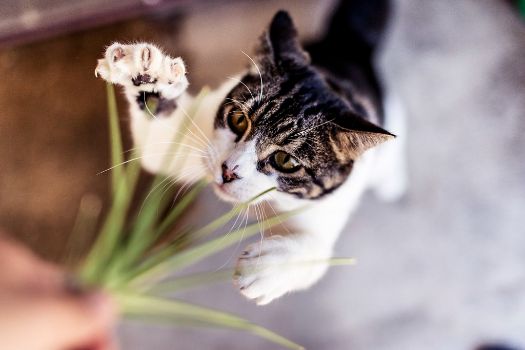
Factors that Affect Declawing Cost
Pre-Surgery Examination and Lab Tests
Veterinarians perform these tests to ensure the cat is healthy enough to undergo surgery. These can include blood tests, urine tests, or other diagnostics.
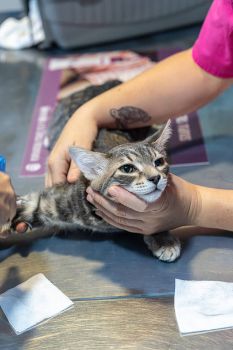
Cat’s Overall Health
The health condition of your cat plays a significant role in the cost. Additional precautions or medications might be needed if your cat has health issues, increasing the cost.
Anesthesia
Anesthesia is necessary for a procedure like declawing. The cost depends on the type of anesthesia used, the length of the procedure, and the cat’s weight and overall health.
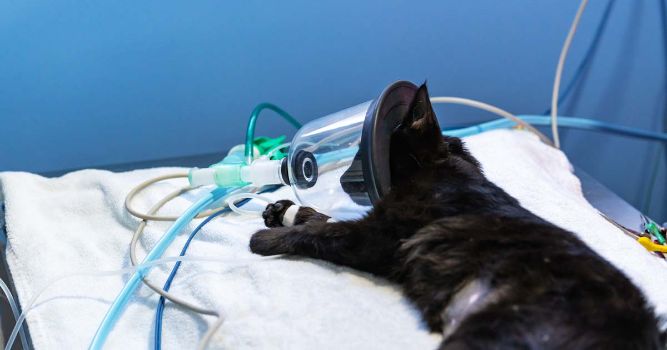
Surgery
The complexity of the procedure and the time it takes will affect the cost. Some cats may require a more complex procedure, while others might be straightforward.
Post-Procedure Medications
After the surgery, your cat will need pain relievers and possibly antibiotics to prevent infection. The types and amounts of medications required will impact the cost.
Overnight Stays
Depending on the procedure and how well your cat responds post-surgery, overnight or multiple stays may be necessary for monitoring and care. This would add to the cost.
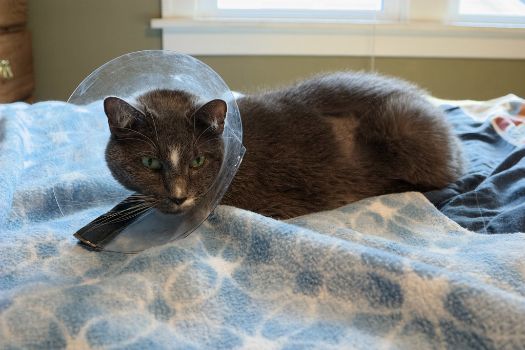
Follow-up Appointments
After the surgery, follow-up visits will be necessary to monitor healing and address any complications. These visits are typically additional costs.
Location and Veterinarian
Prices can also vary depending on your region, the specific clinic, and the veterinarian performing the surgery. Higher cost of living areas tend to have higher veterinary costs.
Emergency Services
If complications arise and require emergency services, this would significantly increase the cost.
Declawing Costs Breakdown
Pre-Surgery Examination and Lab Tests ($200-$400): This includes physical exams and lab tests to ensure the cat is healthy enough for surgery.
Anesthesia ($300-$600): This cost covers the anesthesia used during the procedure. The price may vary depending on the cat’s weight and overall health.
Surgery ($800-$1000): This is the cost for the actual surgical procedure.
Pain Medication and Antibiotics ($100-$200): Pain medication for recovery and antibiotics to prevent infection are typically provided.
Post-Surgery Care and Follow-Up Visits ($100-$200): This includes any necessary follow-up appointments and post-operative care, such as bandage changes.
Additional Fees ($100-$400): There could be additional costs for emergency services if complications arise or for other necessary items like an Elizabethan collar (cone) to prevent the cat from licking its wounds.
Is Declawing the same as Nail Clipping?
No, declawing is not the same as nail clipping. Nail clipping simply trims the cat’s nails, while declawing is a surgical procedure that amputates the last bone of each toe, effectively removing the cat’s nails permanently. Declawing is far more invasive and can lead to serious physical and behavioral complications for the cat.
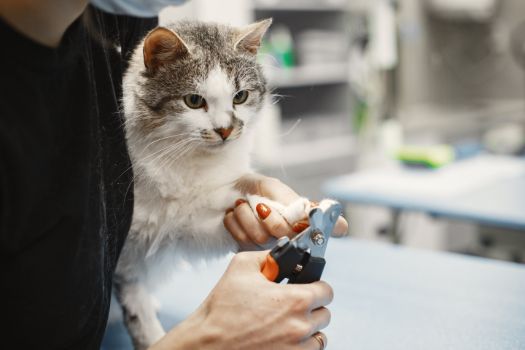
Safe and Humane Alternatives to Declawing
Scratching Posts/Pads
Provide your cat with plenty of scratching posts or pads. These give your cat an appropriate place to exercise its natural scratching behavior. You can encourage usage by placing them near their favorite sleeping spots or spraying them with catnip.
Regular Nail Trimming
Regularly trim your cat’s nails to minimize the potential damage from scratching. It’s a safe procedure, but you must be careful not to cut into the quick, pink part of a cat’s nail that contains blood vessels and nerves.
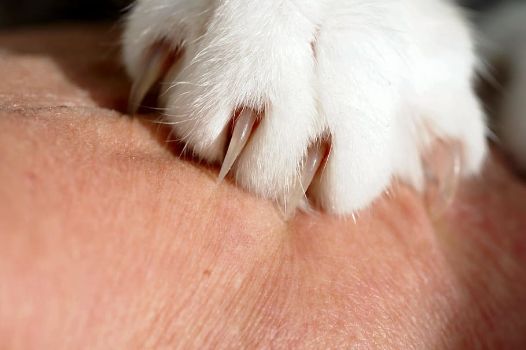
Nail Caps
Nail caps are small plastic caps that you can glue onto your cat’s nails. They are safe and temporary, usually lasting 4-6 weeks, and they prevent your cat from causing damage when they scratch.
Feline Pheromone Sprays
These sprays can discourage your cat from scratching certain areas. They work by mimicking the natural facial pheromones of cats, which can deter unwanted behavior.
Training
Train your cat to associate scratching on inappropriate items with unpleasant experiences. This could involve using pet-safe deterrent sprays on furniture or making a loud noise when they start to scratch inappropriately.

Furniture Covers
Protective covers can prevent damage to your furniture. These can be particularly useful during the training period.
Environmental Enrichment
Providing a stimulating environment with lots of toys, climbing trees, and interactive play can reduce your cat’s desire to scratch inappropriately. Boredom often leads to destructive behaviors.
Drawbacks of Declawing
Pain and Discomfort: Declawing involves amputating the last bone of each toe, causing significant pain during recovery and potentially lifelong discomfort.
Behavioral Changes: Declawed cats may develop behavioral problems such as increased aggression or inappropriate elimination (urinating or defecating outside the litter box) due to stress or discomfort.
Mobility Issues: Cats use their claws for balance, climbing, and self-defense. Without their claws, their mobility and ability to protect themselves are significantly reduced.
Risk of Complications: As with any surgery, there’s a risk of complications, including infection, tissue necrosis, lameness, and back pain.
Psychological Trauma: Cats can experience psychological stress due to losing a natural, instinctive behavior.
Physical Complications: Some cats can experience regrowth of improperly removed claws, nerve damage, or bone spurs, leading to long-term pain and discomfort.
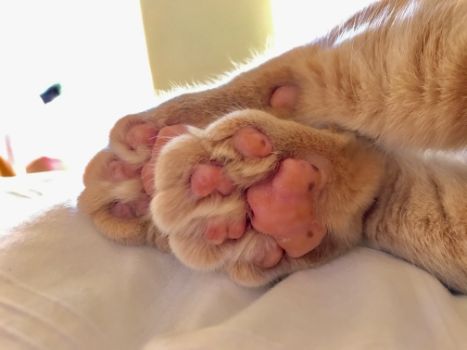
Types of Cat Declawing Processes
Clippers (Resco Clipper Method)
This traditional declawing method uses a clipper to cut through the joint that connects the claw to the bone. While quick, it often leads to incomplete removal and possible claw regrowth, causing complications.
Disarticulation
This procedure removes the entire third bone (the one from which the claw grows). The surgeon disarticulates or severs the joint and removes the bone, which prevents claw regrowth but causes more discomfort than other methods.
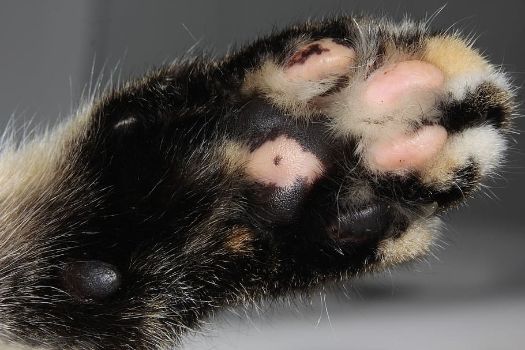
Lasers
Laser declawing uses a concentrated beam of light to cut through tissue by heating and vaporizing it. It causes less bleeding and swelling than other methods, but it still results in significant pain and potential complications.
Tendonectomy
Rather than removing the claw, a tendonectomy involves cutting the tendons that allow a cat to extend their claws. While this keeps the claws intact, it prevents the cat from being able to control their claws fully and necessitates frequent nail trims due to the inability of the cat to naturally wear down their nails.
Frequently Asked Questions
Why do cat owners consider declawing?
Cat owners sometimes consider declawing to prevent furniture damage or protect people in the household from being scratched. However, it’s generally viewed as a last resort due to the significant drawbacks and ethical concerns.
What is the right age for declawing?
If declawing is chosen, younger cats recover faster and have fewer complications. However, many veterinarians and animal welfare organizations advise against declawing at any age due to the associated physical and psychological harm.
Are there any pros of declawing and when a vet recommends it?
The primary benefit of declawing from a human perspective is the prevention of scratches on furniture or people. However, most vets only recommend it as a last resort, if at all. In certain cases, like for the medical well-being of the cat (i.e., cancerous nail bed tumors), declawing might be necessary.
How long does it take for a cat to recover from declawing?
The initial recovery period after declawing typically takes around 2 weeks. However, the healing of deep tissue may take up to a few months, and potential long-term physical or behavioral issues may persist beyond that.
How to choose the best vet for declawing your cat?
If declawing is necessary, look for a vet who uses up-to-date, humane surgical methods and pain management techniques. Ask about their experience, post-operative care, and their views on declawing. Ensure they explain all potential risks and provide a thorough follow-up care plan.